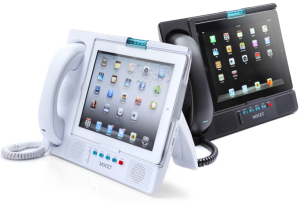 In a recent report, research organization Gartner predicted that 70% of professionals will conduct their work on personal smart devices by 2018. To translate- Gartner effectively predicted that 70% of employees will be working on their own smartphones or tablets by 2018, a concept generally referred to as BYOD, or Bring Your Own Device.
In a recent report, research organization Gartner predicted that 70% of professionals will conduct their work on personal smart devices by 2018. To translate- Gartner effectively predicted that 70% of employees will be working on their own smartphones or tablets by 2018, a concept generally referred to as BYOD, or Bring Your Own Device.
If BYOD plays out as Gartner predicts than this will be a huge change in the workplace, and one that requires some extensive planning to implement properly, with minimal friction.
Whose Device is it Anyway?
It’s easy to see why the BYOD boom may be popular with, and allowed by, employers- BYOD naturally corresponds with lower infrastructure investments. With BYOD organizations can trust, and even mandate, that employees take care of their own hardware needs. Combined with the widespread adoption of remote hosted UC networks, BYOD could mean that organizations will stop investing in their own hardware.
On the other hand, there is another point to consider here, and that’s the fact many modern employers still purchase smartphones and tablets for their employees. Will we see a movement to a workforce that primarily utilizes mobile devices that are owned by the organization itself? While this movement could mean that employers will still invest in hardware, it may give them greater control over the mobile devices utilizing their networks, which helps alleviate some of the major security concerns revolving around BYOD.
Security Concerns- Will Organizations Still Invest in Hardware?
Concerning network security – if employers allow BYOD then they will still need to have some sort of control over the devices their employees bring in to hook up to the company networks, in which case it raises the question of whether or not employees will want to submit their personal devices to corporate policies, or whether they’d prefer to work with an organization’s own infrastructure.
As long as hackers continue to target employees’ own personal devices to break into corporate networks, this tension will persist, and may incentivize organizations to continue to invest in hardware for their employees.
What Sort of Work’s Being Done?
The argument for a massive increase in BYOD seems to dodge around the question of whether or not employees can even complete their work using a mobile device. While mobile devices have proven capable of performing a variety of organizational tasks, they still remain insufficient for a wide range of common work tasks ranging from writing to complex data entry to design work. Whether or not BYOD can dominate the workplace, as thoroughly as Gartner predicts, depends on a lot of growth in the capabilities of mobile devices.
If BYOD is going to grow dramatically in the workplace then we’re going to need to see a similar growth in either device capability, or in hybrid devices (tablet/laptop combos) or in peripheral use (external keyboards). It doesn’t matter if cloud computing and VoIP-based Unified Communications minimize the need for on-site storage or software execution- if mobile devices physically do not have the interface necessary to run these programs then they can’t become the primary computing device in any organization.
Most likely we’re going to see 70% adoption of BYOD among employees by 2018- but it is doubtful that these devices are going to completely replace standard computers and laptops, and it’s wrong to think organizations can take a hands-off approach to hardware maintenance and investment just because their employees use their iPhones at work. Security concerns and problems with task execution alone mean the natures of software, of network security, of mobile device functionality, and of work completed on the job all need to change dramatically in the next 5 years to see such a dramatic take-over of the workplace.